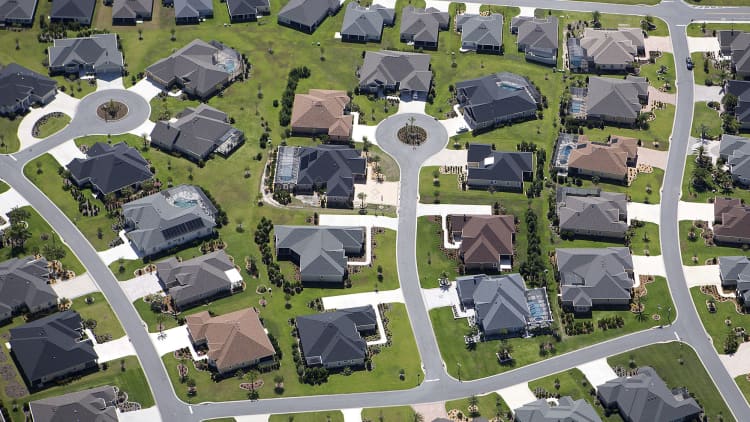
Homeownership is at the lowest level in 50 years, and one of the primary reasons is that younger Americans are not buying homes at nearly their normal pace. They are struggling both to afford a home and to qualify for a mortgage.
Younger, first-time buyers usually turn to FHA loans. These are low down payment mortgages insured by the federal government. Borrowers can put just 3.5 percent down, but they do have to pay insurance on the loans. That insurance was about to get cheaper because one of the final acts of the Obama administration was to lower the FHA annual premium. But the Trump administration reversed that decision on its first day.
The administration said only that, "more analysis and research are deemed necessary to assess future adjustments."
That came in a letter signed by General Deputy Assistant Secretary for Housing Genger Charles. HUD Secretary nominee Ben Carson addressed the last-minute move by the outgoing administration in hearings last week. "I, too, was surprised to see something of this nature done on the way out the door. Certainly if confirmed, I'm going to work with the FHA administrator and other experts to really examine that policy," Carson said in response to a question from Sen. Patrick Toomey, R-Pa.
When the cut was announced on Jan. 9, Republican Rep. Jeb Hensarling, chair of the House Financial Services Committee with oversight over the FHA, said: "It seems the Obama administration's parting gift to hardworking taxpayers is to put them at greater risk of footing the bill for yet another bailout. Just three years ago the taxpayers had to spend $1.7 billion to bail out the FHA. Lowering premiums to below market rates now only puts the FHA in a more precarious financial condition."
The cut in the premium, a quarter of a percentage point, would have saved borrowers on their monthly payments, but it also would have allowed more borrowers to qualify for FHA loans — up to 40,000 more, according to the National Association of Realtors. That is because lenders today follow very strict limitations on how much debt a borrower can have compared with his or her income. The insurance premium is part of that debt.
Between 750,000 and 850,000 new FHA loans are expected to be originated this year, and for those borrowers, the break would have been welcome, given how fast home prices are rising. After the worst housing crash in history, home values recovered quickly and shot past their previous highs in many local markets.
"We're disappointed in the decision but will continue making the case to reinstate the cut in the months ahead," said NAR President William Brown.
On a $190,000 loan, which was the FHA's average loan size in 2016, the premium cut translates into $40 per month or $480 per year.
That may not sound like a lot, but the announcement of the premium cut two weeks ago, which would not have gone into effect until this week, sparked a 7 percent jump in applications to refinance a mortgage, driven entirely by FHA applications, according to the Mortgage Bankers Association. Mortgage applications to purchase a home fell but might have increased once the cut went into effect.
"Lenders are expecting a customer relations nightmare as all borrowers who received the lower premium in their disclosure will obviously be upset that their housing expense increased $40 a month on the average FHA loan. It would obviously be much more in high-cost areas like the D.C. metro area," said Brian Chappelle, founder of Potomac Partners, a mortgage industry consulting firm.
Already, said Chappelle, lenders are reporting that some borrowers who qualified for FHA loans under the premium cut now no longer do.
"I think we will need another couple of weeks of data to have a clear read on the impact of the rollback, but I expect that FHA volumes will return to their prior level for both purchase and refinance," said Michael Fratantoni, chief economist of the MBA.
The last time the FHA cut its insurance premium was almost exactly two years ago. That reduction was larger, half a percentage point, and as a result FHA refinance volume tripled. Applications to purchase a home with an FHA loan also moved higher but not quite as sharply. The FHA estimates that the 2015 cut helped 75,000 borrowers with FICO credit scores below 680 qualify for a mortgage.
The Trump administration has not ruled out reinstating the cut, but analysts believe its chances are shrinking with time.
"HUD nominee [Ben] Carson's commentary suggests that additional pricing changes at the FHA — either to the MIP (mortgage insurance premium) or cancelability — are far less likely in the years ahead," noted analysts with Compass Point. "We believe the odds of the cut becoming fully reversed have increased from 40 percent to 70 percent."


